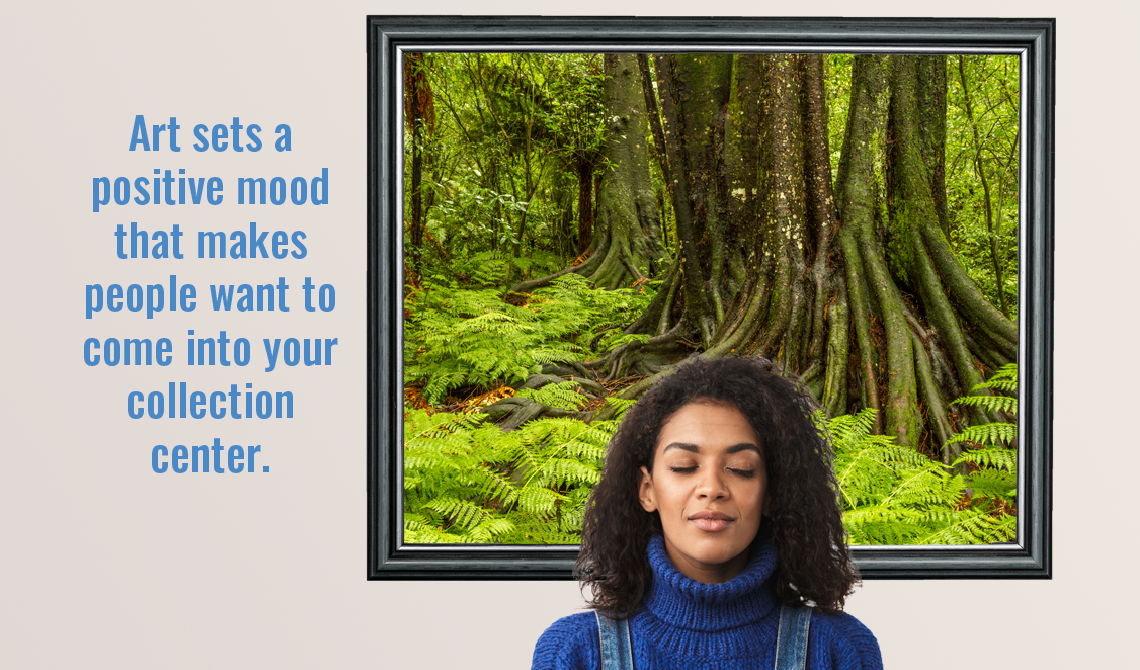
It improves the donor experience.
Plus, it impacts how staff members feel about their jobs–an often-overlooked component of the center atmosphere. A more pleasing environment improves employees’ work life, aiding job satisfaction and engagement.
THE POWER of PLASMA CENTER ART
Research has shown that art can play a helpful role in healing.
You want your center to feel “medical” in terms of cleanliness and efficiency. Those lead to quality donors and staff. But you also want it to be warm, calming and restorative. These make the environment more welcoming and improve the experience of being there.
Stough Group can handle your entire art selection, delivery, installation and protection process through our design arm, Barbara Stough Interiors. Call 513.604.3300 today to learn more.
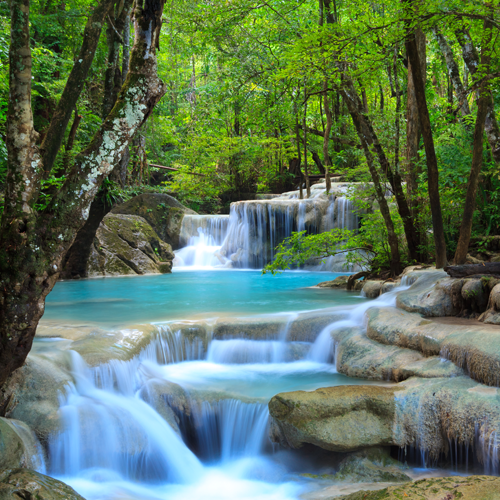
1. Scenes of nature found to enhance healing
Dr. Henry Domke, formerly a practicing physician, found the nature scenes he used in his office and exam rooms to be so healthful–lowering blood pressure, reducing pain sensations, and minimizing the need for pain meds–he quit medicine to work on creating healing art fulltime.
After extensively exploring the topic with architects, interior designers, facility managers and artists, he created a blog and then wrote a 216-page book covering art as an adjunct to healing.
Biophilia
Humans have an inherent tendency to connect with the natural environment.
In 1984, evolutionary biologist Edward O. Wilson argued in his book that humans have an innate, evolutionary affinity for nature.
Researcher and author Roger Ulrich makes the same argument in his book, “Putting Patients First.”
There is mounting scientific evidence that virtually all cultures and socioeconomic groups respond positively to visions of the natural world.
Millions of years of evolution have left a genetic mark on us.
We have a predisposition to respond positively to the natural settings that aided our well-being and survival.
In the presence of nature—or images of nature–stress goes down and healing goes up, ensuring contentment and satisfaction.
Triggering happy thoughts with art or reality
Because the medical environment is necessarily “cold,” nature scenes triggering thoughts of happy times outdoors transport people mentally to a better place.
Even better than nature scenes in plasma center art is the ability for donors to look out the window and see nature during their time in your center. Exterior windows are extremely important in calming donors. Even a small landscaped area visible from the donation area can have an impact.
A 2017 study showed that art contributes to an atmosphere where donors feel safe and socialize more freely. Art helps us maintain a connection to the real world and supports our identity. This study concluded that visual art in medical facilities contributed to better outcomes by improving donor satisfaction.
Culture-specific art 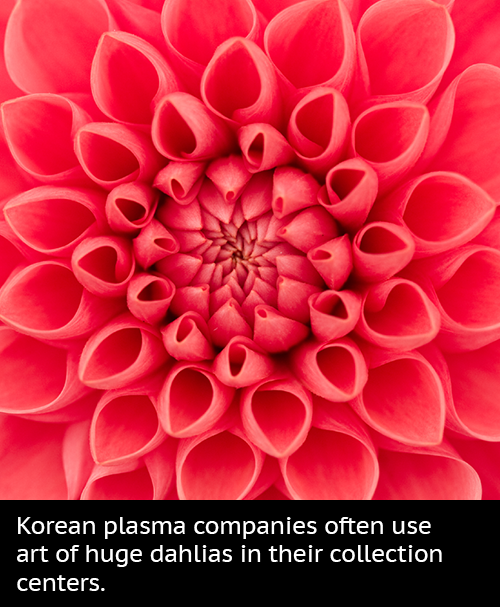
Some cultures do have preferences in nature images. Movies about Korean culture often feature dahlias, for example, because in the Korean culture, dahlias say “Your love makes me happy,” and symbolize inner strength, elegance, grace and kindness.
Artwork tailored to specific cultures and geographic regions resonates with people from those cultures and regions.
Back To Top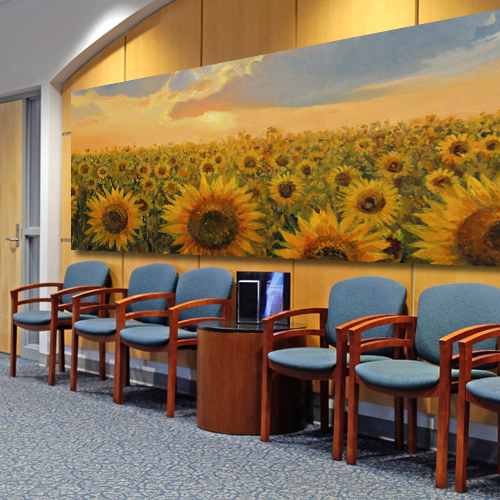
2. Using large art pieces
A story in Domke’s book illustrates the power of large natural images:
A woman in Illinois had cancer. This required her to make regular trips to the hospital for chemotherapy.
In the waiting room, there was a large photograph of an oak tree in a forest with morning sun filtering through the branches, illuminating the forest floor and its lush undergrowth.
The woman started coming in early to look at the picture and meditate before her chemo. She even talked about it with her nurse, saying the way the sun shone through the trees “felt like God was going to walk out.”
Large art through the ages
Since ancient Greek and Roman times, artists and sculptors made their art larger than life. Big can be a way to exercise power, to amaze or simply to inspire.
In the presence of a large artistic expression, we can feel we know the piece’s subject. Our senses react faster than our minds, telling us that something is bigger than us, stronger, greater. A large image of nature allows us to more easily put ourselves in the scene.
Words, patterns and logos
Many plasma centers use custom wall coverings. One Stough client has put large words like “Save Lives,” and “Donate” for inspiration in a repeating pattern along one whole wall.
Other custom wallpapers use geometric patterns with the company logos.
As with large photographs or paintings, these large patterns are designed for impact and to create a upbeat mood.
Back To Top3. Using local images
When Barbara Stough, the owner of Barbara Stough Interiors who designs the interiors of Stough-built plasma centers, selects art for a client, she often chooses large images that convey the identity of the city where the plasma is being collected.
For example, for a Chicago center, she picks paintings showing the El, Michigan Avenue and Lake Michigan.
For centers in the South, the images might convey the Mississippi River, Blues music or BBQ.
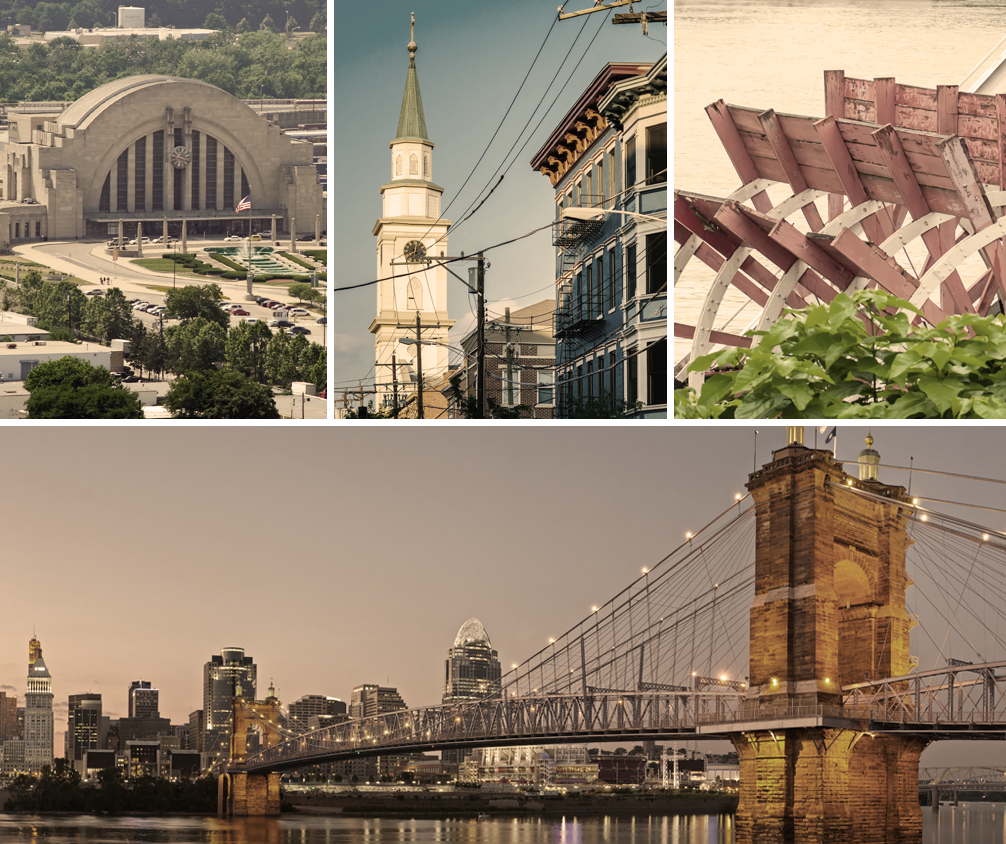
Helping donors and employees feel at home
Localized images put donors and staff at ease because the images are familiar and illicit positive thoughts, similar to the thoughts triggered by natural images. Images of “home” help a person feel relaxed.
Back To Top4. Hanging and securing your art
The job is not done after the art is purchased. It must be put in the right places, at the right heights with correct lighting to have maximum impact. Art pieces, particularly large framed and matted images, are heavy and must be carefully hung to make sure it will not fall.
To make sure your art doesn’t “walk out of the center,” locks need to be put on the frames, securing the artworks to the wall.
Barbara Stough Interiors can select, hang and secure the artwork to protect your investment.
Back To TopADDING/CHANGING ART TO IMPROVE THE DONOR EXPERIENCE–AND PRODUCTION–IS EASY. WE CAN FIND AFFORDABLE, APPROPRIATE ART FOR YOU, THEN INSTALL AND SECURE IT PROPERLY.
Reach Us
To streamline delivery and control costs, we take a prototype approach when possible, engage local civil engineering consultants for each project, and establish a working relationship with the local governing authority.